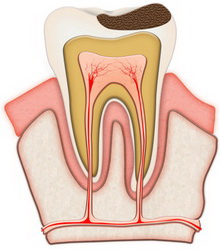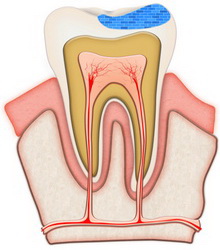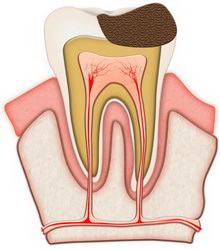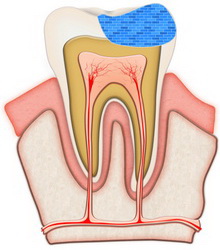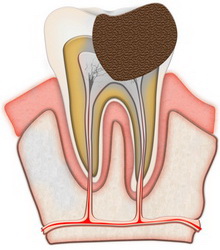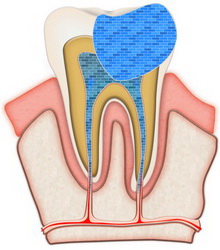Dental control visit
Saying "Better prevent than cure" extremely well fits into the preservation of oral health. Any uncured tooth with caries or plaque increases the amount of bacteria in the mouth, which significantly increases the risk of subsequent defects and worsens the freshness of breath. Depending on the amount of teeth treated in the past, their condition and hygiene level are recommended to carry out a check-up with a dentist once every 6-12 months. This significantly reduces the risk of more serious problems with the teeth.
The course of the inspection visit and its costs:
- assessment of the hygiene status of teeth and gums
- checking the surface of the teeth for caries
- inform you of recommendations and possible health problems in the mouth
- control visit is completely painless
- duration of the inspection visit is usually 15 minutes
- the cost of a check-up is PLN 30
Below we present 3 stages of caries development:
Fig.1-2: It is estimated that when caries is cured in its initial stage, when caries affects less than 10% of tooth tissues, the chance of tooth survival for the next 20 years is as much as 95% – of course, with regular control of the condition of the dentition. Treatment at this stage is the least invasive and the tooth usually does not give any pain symptoms beforehand.
Fig.3-4: if caries at the first stage is not detected and begins to destroy more than 10% of tooth tissues, the chance of survival of the tooth in the mouth for the next 20 years drops to about 70%. Treatment at this stage consists in removing all damaged tissue caries and replacing it with composite filling. At this stage, the tooth may already give some pain symptoms, e.g. on temperature or sweet foods, but the destruction of the tooth may also be completely asymptomatic for the patient.
Fig.5-6: If the tooth has not been cured so far, then caries enters the third final stage. The destruction of the tooth crown already exceeds 50%. Even the use of the best possible treatment allows you to achieve only about 30% of the tooth survival over the next 20 years. During treatment, it is necessary to remove bacteria from the chamber and canals of the tooth, in order to prevent them from entering through blood vessels inside the body. After tightly
filling the canals and tooth chamber, it is recommended to make
a crown insert and
tooth crown. The filling exceeding 50% of the tooth may not protect the tooth from further crushing or cracking. Upon the patient's request, we remind you of the upcoming date of the inspection visit in the selected form – by phone or by sms.
Faqs:
- If nothing hurts me, does it mean that my teeth are healthy? – Unfortunately, this is not always the case, about 30% of patients do not feel soreness even with a large destruction of the tooth by caries. The remaining 70% of patients begin to feel tooth sensitivity most often at the 2nd stage of caries. Usually the first symptom of the problem is hypersensitivity to sweet food, later on temperature.
- are X-rays taken during the follow-up visit? – Most of the tooth surface exposed to caries is visible during the examination in the mouth. X-ray images also show the tangential surfaces of the teeth and the condition of bone tissue around the teeth, which should be checked, for example, after root canal treatment. For a full accurate diagnosis of the condition of the oral cavity, it is recommended to take a control panoramic image every 2 years.
- Does every black spot on a tooth need treatment? – Fortunately, no, it happens that tooth enamel is partially demineralized and discolored, but caries does not deepen and stops at this stage. Tooth reaming in such a situation can cause more harm than good and it is usually recommended to periodically control this type of enamel damage. The exception is discoloration in visible places, which is treated for aesthetic reasons.
